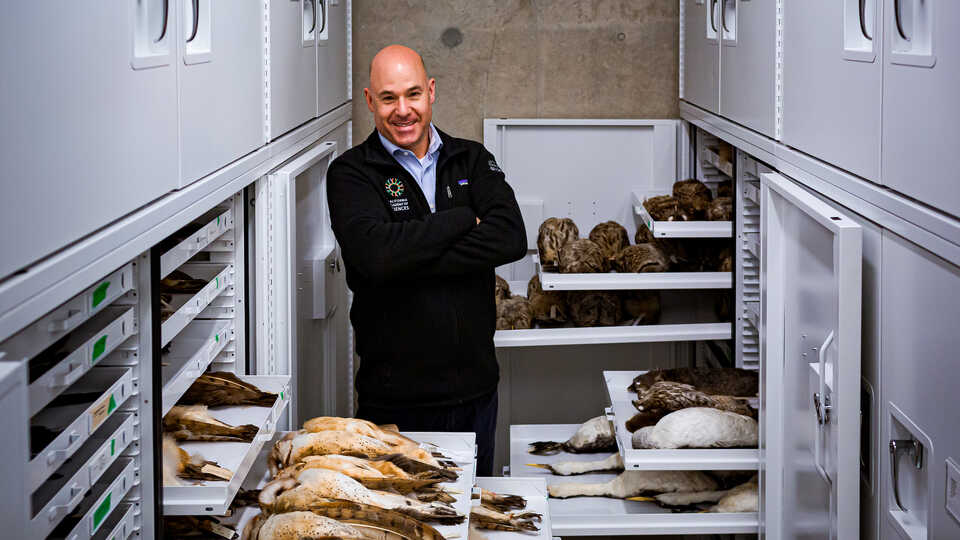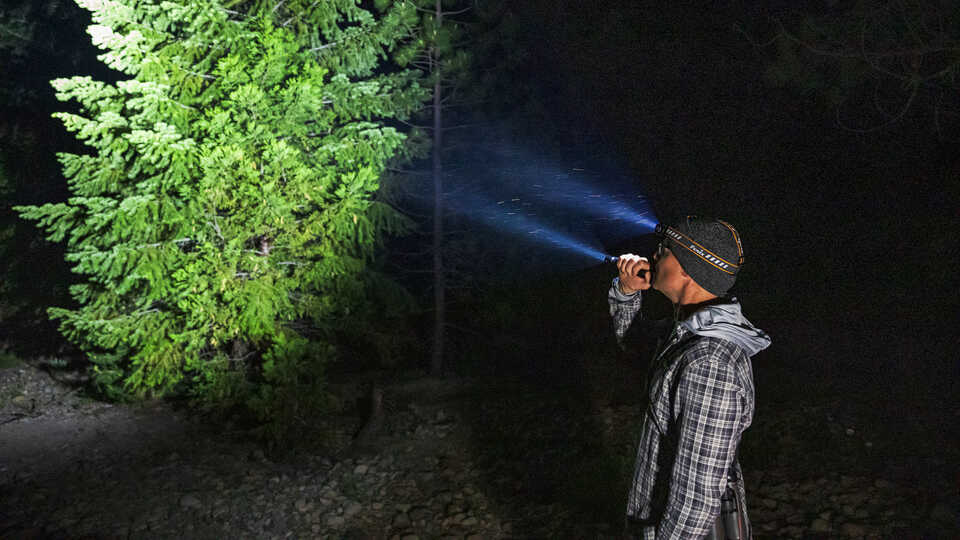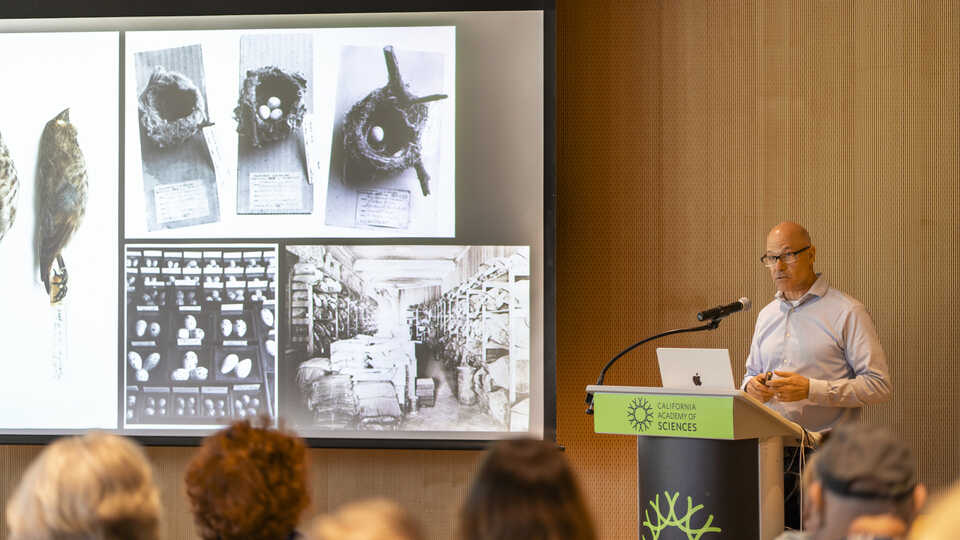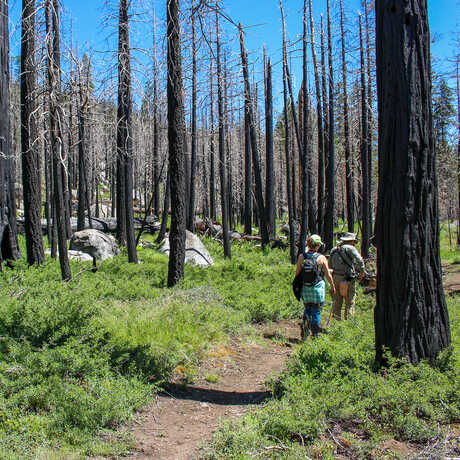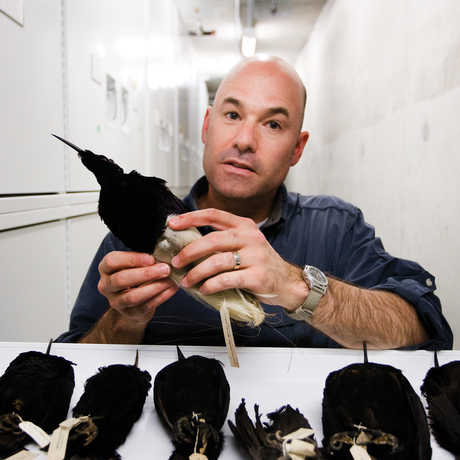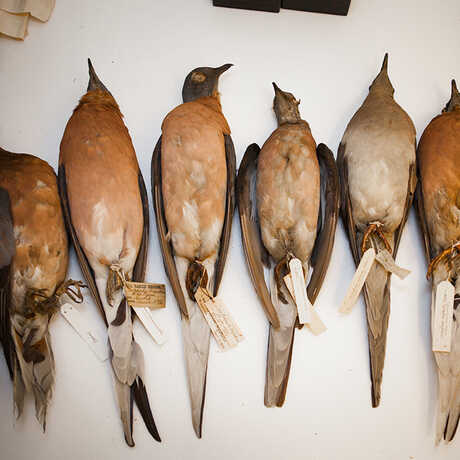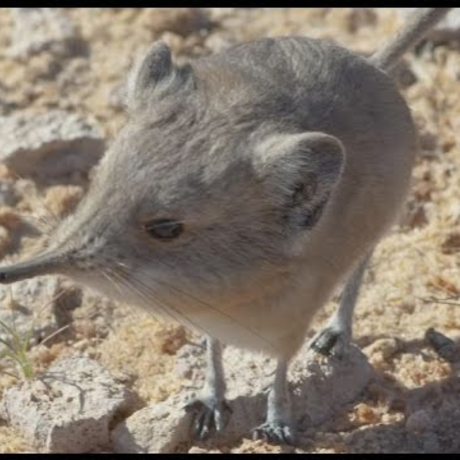Scientist Spotlight
Jack Dumbacher
Jack Dumbacher, PhD, studies the ecology and evolution of birds. His research highlights include the evolutionary study of round-eared elephant shrews in Namibia; chemical defense among New Guinean birds; and the conservation of spotted owls in California. Dumbacher’s most recent projects focus on fire resilience in California forests and conservation efforts aiming to restore original ecosystems on the Galápagos Islands—all projects that harness his multidisciplinary background in math, molecular ecology, and avian genetics. Dumbacher has served as the Academy’s curator of ornithology and mammalogy since 2003, and was named a Patterson Scholar in 2024.
Rewilding an archipelago
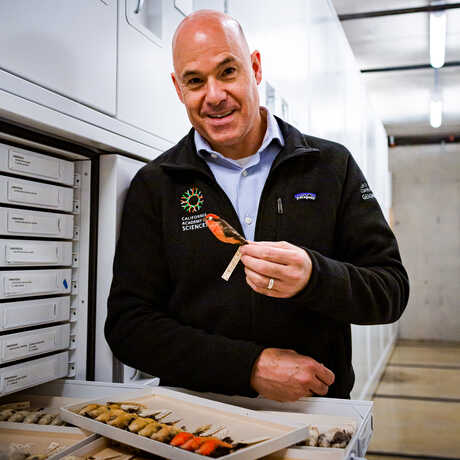
Today, Dumbacher’s main focus rests in the famed Galápagos Islands. Through their joint research lab, Dumbacher and San Francisco State University Professor Jaime Chaves, PhD, have launched a series of collaborative projects documenting the Galápagos's evolutionary history and present biodiversity.
Dumbacher draws from decades of experience and research in biological conservation in his latest project, Rewilding the Galápagos. Utilizing both historical ecological baselines and modern species data, Dumbacher is working with a broad coalition of scientific organizations dedicated to bringing the Galápagos back to its original ecological makeup—an effort scientists hope will grow the archipelago’s resilience and vibrancy in the face of climate change and other existential threats.
The sounds of a resilient forest
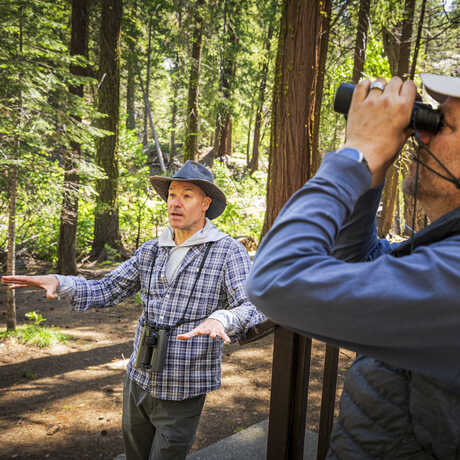
After a spate of devastating wildfires ripped through western ecosystems in recent years, Dumbacher’s work in California has turned to forest resilience and regeneration. Dumbacher and a team of researchers from the Academy are investigating how prescribed fires could contribute to healthier forest ecosystems and reduce the risk of high-intensity wildfires in a forested Northern California watershed: Caples Creek.
His approach? Following the call of the birds.
Since 2017, Dumbacher and colleagues in the U.S. Forest Service and other partner organizations have monitored bird populations around the watershed, creating years of data to trace bird distribution and survival after prescribed burns. Because birds provide a strong indication of a forest’s overall biodiversity, measuring their abundance after forest treatment helps scientists and land stewards better understand how to manage landscapes to conserve biodiversity and forest ecosystem integrity.
Owl competition
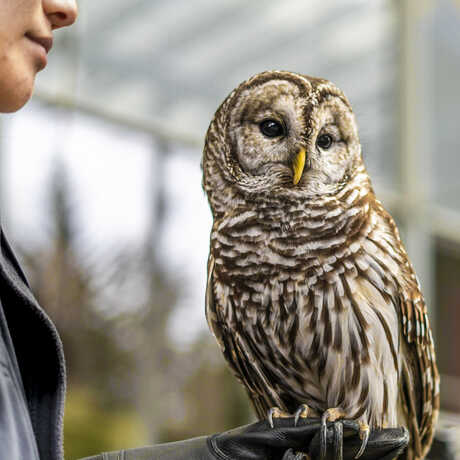
Before Dumbacher embarked on fire resilience projects, his work in the breathtaking forests of the Western United States focused on the relationship between two nocturnal birds: the invasive barred owl (Strix varia) and the population of federally protected northern spotted owls (Strix occidentalis).
“We were alarmed by rapidly declining spotted owl populations, and suspected that they were being edged out by—and possibly hybridizing with—more aggressive barred owls showing up outside of their traditional range,” said Dumbacher. “With the clock ticking for endangered spotted owls, we needed to study these interactions to properly guide species survival plans.”
Dumbacher’s team went on to conduct a dizzying array of studies on these two owls, ranging from genome sequencing to researching their relative diets and the implications of their hybrid mating. Much of this work derived from fruitful collaborations with local foresters and conservationists, who helped Dumbacher’s lab collect specimens and monitor the ebb and flow of owl populations throughout Northwestern California.
Using this information, Dumbacher’s lab helped both scientists and land managers better understand the threats posed by invasive barred owls, inspiring partners in the field to develop management practices tailored to protect endangered spotted owls. Ultimately, Dumbacher’s work underscored the complexities of 21st-century conservation practices and demonstrated how owl collections could become crucial research surrogates for other forest-dwelling predators facing extinction.
Poisonous birds
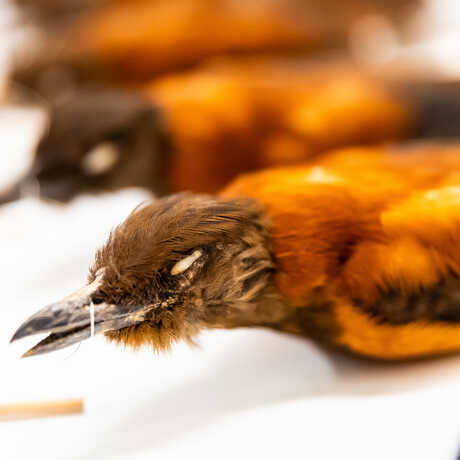
Some of the best discoveries in science are completely serendipitous. Dumbacher discovered, quite by accident, that common New Guinea birds use potent poisons for protection. While traveling alongside local guides in the island nation, Dumbacher released a jay-sized songbird called a “pitohui” (Pitohui dichrous) from a mist net. In doing so, he cut his hand and developed a tingling, burning sensation—one that transferred to his tongue once Dumbacher idly popped the cut in his mouth.
This chance encounter led Dumbacher to years of research on the chemical defense in birds living on the Pacific island. Though local New Guinean guides long recognized the poisonous qualities of pitohui birds, Dumbacher and other researchers later identified the chemical structure and potential use of pitohui toxins, as well as the evolutionary relationships of these birds. This work eventually revealed that the pitohui possessed “batrachotoxin,” a poisonous substance found in some species of frogs, including poison dart frogs located half a world away in Colombia.
Dumbacher’s research on the pitohui made a huge splash in the field of ornithology, particularly because Dumbacher had identified the pitohui as the first poisonous bird known to science. Today, Dumbacher has documented five more species of poisonous birds and, in another first, located the source of the bird's poison: the beetles they eat, which are full of the same batrachotoxin.
Sengis (AKA elephant-shrews) of the desert
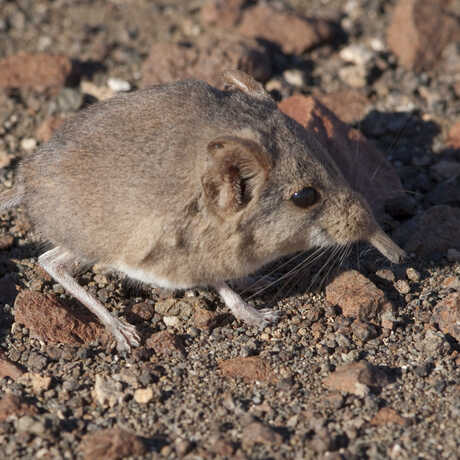
One of the harshest and oldest places on Earth is the desert of Namibia. Stretching 1,000 miles along the coast of the Atlantic in Southwestern Africa, the Namib Desert is largely uninhabited by humans—yet animal populations have evolved in the pristine isolation of the desert for approximately 55 million years.
Dumbacher and Academy colleague Galen Rathbun, PhD, spent several years in this inhospitable environment looking for the round-eared elephant shrew, a tiny creature about the size of a gerbil, whose genetics can help us learn more about evolution in Africa. Dumbacher and collaborators examined both the phenotypic and genotypic variance of elephant shrews across several geographic ranges. Using both fresh samples and historical museum samples, Dumbacher and other researchers conducted DNA sampling that helped understand their relationships and reclassified new species of these small desert mammals.
Evolution and math
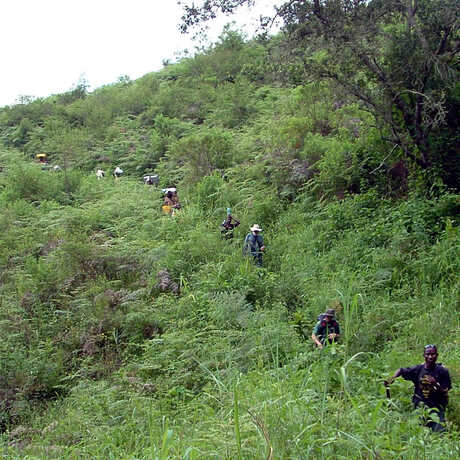
Though a biologist and ornithologist by training, Dumbacher began his career with a background in math—a passion that still informs his study of evolutionary biology today. In college, one of his favorite classes used mathematical models to explain altruistic behavior and cooperation. The ability to boil down the complexities of life using a simple mathematical construct appealed to Dumbacher, who saw how mathematical models could be used to reconstruct the evolution, distribution, and diversity of organisms.
Using gene sequencing to track the evolution of a single gene through time, scientists can then employ mathematical models to examine slight variations in selection and make accurate predictions about gene frequency. As Dumbacher says, “The more we understand how animals evolve, the more we understand how we are evolving. The forces that are pushing animals to evolve push on us, too. The more we know about nature, the more we know about ourselves. The more we know about ourselves, the better we can make decisions about our future.”
This philosophy undergirds many of Dumbacher’s research projects, ranging from gathering and synthesizing baseline data on the Galápagos Islands to visualizing the biodiversity of birds along Caples Creek.
Scientist Q & A
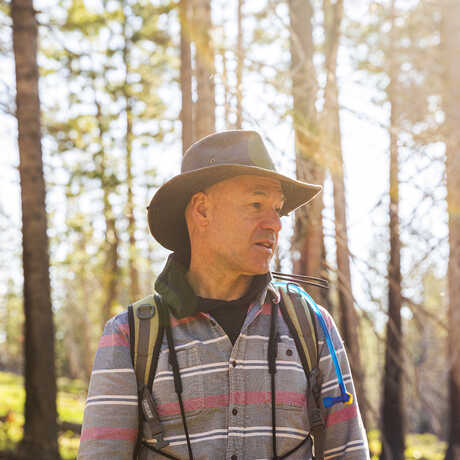
Who is your science hero?
Charles Darwin is definitely my science hero. Although it may seem trite or obvious for an evolutionary biologist, Darwin was an excellent observer and curious natural historian, and he made significant contributions to geology, anthropology, paleontology, botany, animal breeding, and many other natural sciences. He was also highly critical of his own ideas, which helped him test and refine his own thinking on many topics. Did you know that he authored over 15 books?
What species would you like to see on exhibit?
I would love to see the poisonous birds, the hooded pitohui or variable pitohuis of New Guinea, on exhibit in the rainforest dome. This would be very difficult to do, but they are not only beautiful but they are also behaviorally active and interesting—and, did I mention POISONOUS? How cool is that?
What is your favorite bird call?
I have come to really love the vocalizations of owls. Not only are they interesting vocalizations that resonate in the night, but often these sounds are the primary means by which owls are detected and located. They are each diagnostic for identifying what species is giving them, and because owls are so social, the calls often attract other owls to an area.
Any advice for aspiring scientists?
I think that what differentiates creative thinkers from good scientists is the ability to critically test your ideas. This involves asking good questions, designing experiments that can distinguish among different answers, and using math and statistics to test whether patterns in data are real and repeatable. Be curious, creative, and critical, but develop the tools needed to test whether your ideas are solid.
Department: Ornithology & Mammalogy
Title: Curator of Ornithology and Mammalogy
Expeditions: 28
Most Recent Expedition: Namibia
Profile Videos:
What Magic Is
The Elegance of Evolution
Rare Poisonous Birds
Related Websites:
Jack's IBSS profile
O&M collections include 135,000 bird and mammal specimens from more than 120 countries. Meet the researchers, explore projects and expeditions, and more.
